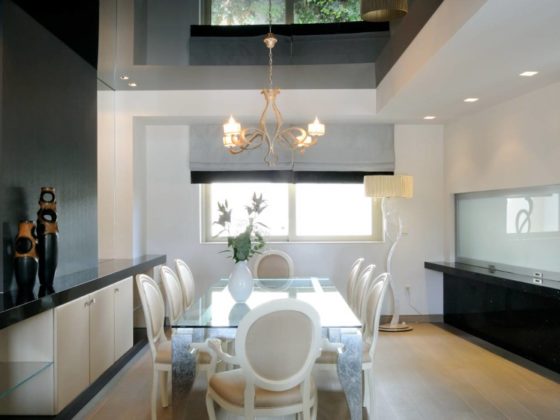Home renovation
Home renovation

The decision to renovate one’s home comes either because it does not reflect the occupant’s needs and desires or when the property is damaged and repairs are needed to avoid any serious functional problems in the future, which would increase the cost of repair works. A renovation is a form of investment that adds value to the property. In addition, it is usually the most cost-effective solution compared to buying a new home. A renovation immediately improves living conditions. Depending on the budget, a total renovation may be undertaken, or alternatively some minor changes can be made that will improve the functionality and aesthetics of the premises. The first and most important stage is to identify the owner’s objective and requirements. Then, the budget is determined, and issues of morphology, style, rhythm, and aesthetics are addressed. Other issues related to custom-built elements and equipment must also be discussed. The overall style of spaces must have been decided before undertaking any home renovation work because changing one’s mind once development works are underway will increase costs due to the additional interventions that will be required. Interior design must be centered on two parallel levels: functionality and aesthetics.
For the success of the overall project, it is essential that a project study (detailed architectural plans solving all technical issues), and a precise estimate of costs and of the duration of works should be made available, in writing, before the work begins. Expertise and the supervision of works are a protection against any wrong decisions which may look like affordable solutions at first but will end up increasing costs significantly. One must be extremely diligent when comparing offers to ensure that the items or services compared are exactly the same.

For a tender to be considered complete, it needs to include a detailed schedule of the works to be performed, the materials to be used, and, of course, the workers’ fees. The quality of materials has a bearing on costs.
Renovation works can be carried out in two separate phases if one’s budget is not enough to take on a large-scale renovation all at once. During the first phase – structural part- all works of a technical nature will be conducted. Demolition and removal of structures, materials, equipment, and other items and reconfiguration of spaces (demolition, removal, and replacement of walls, plumbing, and electrical systems, cabinets, bathrooms, kitchen, floorings, door and window frames, upgrading of heating-cooling systems, installation of plasterboard and painting. Once the first part of the works is completed, the premises are inhabitable and all the rest can be done at a later stage, provided that detailed plans for the remaining works already exist.
A more detailed description of these stages can be found in the section “DESIGN STUDIES”.
For a tender to be considered complete, it needs to include a detailed schedule of the works to be performed, the materials to be used, and, of course, the workers’ fees. The quality of materials has a bearing on costs.
Renovation works can be carried out in two separate phases if one’s budget is not enough to take on a large-scale renovation all at once. During the first phase – structural part- all works of a technical nature will be conducted. Demolition and removal of structures, materials, equipment, and other items and reconfiguration of spaces (demolition, removal, and replacement of walls, plumbing, and electrical systems, cabinets, bathrooms, kitchen, floorings, door and window frames, upgrading of heating-cooling systems, installation of plasterboard and painting. Once the first part of the works is completed, the premises are inhabitable and all the rest can be done at a later stage, provided that detailed plans for the remaining works already exist.
A more detailed description of these stages can be found in the section “DESIGN STUDIES”.




